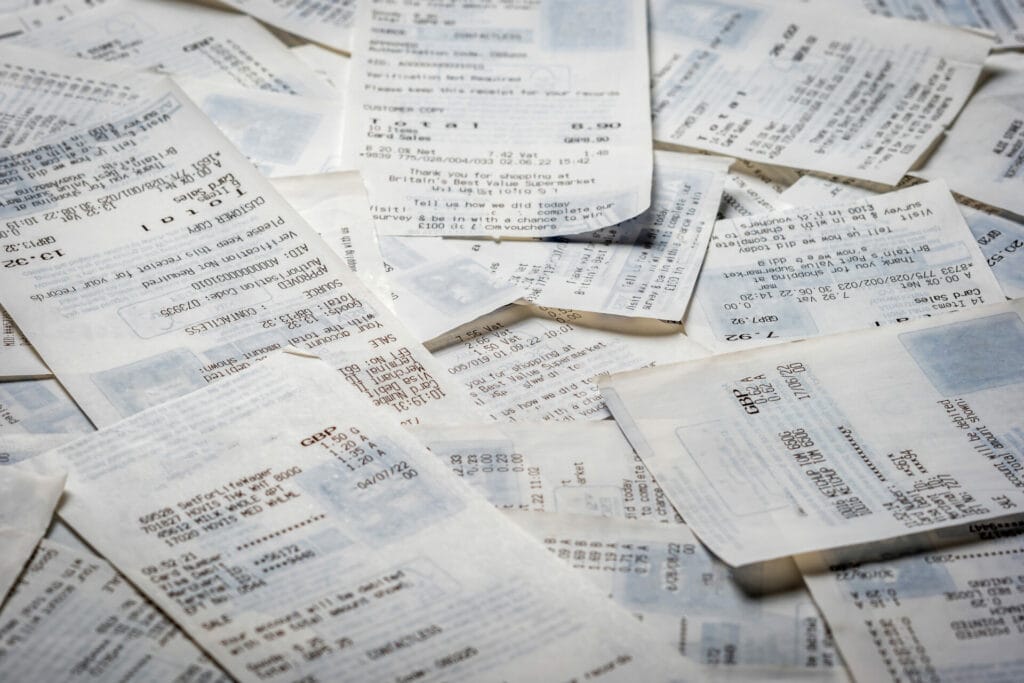Knowing how to keep track of business expenses is key to visualizing cash flow and maximizing tax deductions, but finding a system that is simultaneously easy, efficient, and accurate is no easy task.
In this article, we’ll tell you everything you need to do to track expenses on autopilot, organize tax filings at the click of a button, and keep your most important financials front and center.
Once you’re done, check out our ultimate guide to business expenses and tax deductions to learn how to leverage impeccable record-keeping to minimize your tax bill.
Table of Contents
What Exactly Is a Business Expense?
The definition is simple enough, but the application is anything but.
The IRS considers business expenses anything “ordinary and necessary” for the operation of your business. In this case, “ordinary” means an expense that is common in your industry, while a necessary expense is one that you need to run and grow your business effectively.
We cover the specific interpretations and deduction limits in full in our ultimate guide to business expenses and tax deductions, an article on small business tax deductions, and finally, our primer on non-deductible expenses.
Benefits of Tracking Business Expenses
Effectively tracking expenses offers several significant benefits that can impact the overall success of a business. Here are some key benefits to consider:
Improved Decision Making
Accurate tracking provides important insights into how your business is spending money. Identifying areas of overspending and prioritizing your highest ROI investments can help you achieve your business goals.
Accurate Tax Reporting and Maximization of Deductions
By maintaining proper records, you can ensure you’re claiming all benefits available to you. Additionally, using an automated bookkeeping solution makes filing taxes at the end of the year considerably less time-consuming.
Better Cash Flow Management
Tracking helps you gain a clearer understanding of cash flow dynamics. Monitoring inflows and outflows allows you to anticipate cash shortages or surpluses while proactively managing liquidity needs.
Stakeholder Confidence
Demonstrating financial transparency with detailed financial records goes a long way toward building trust with investors, creditors, and partners. Building these relationships on a foundation of credibility can potentially attract future funding or partnership opportunities.
Audit Preparedness
The Tax Cuts and Jobs Act included funding for increased audits of high-net-worth individuals. Even if your chance of an audit didn’t increase, there’s always an outside chance that bad luck could strike. Record keeping can prepare you to pass an audit without too much stress or major fines.
Things to Do Before Tracking Expenses
Before thinking about expense categories and regular financial reviews, we have to do some prep work. Taking care of these tasks first will make managing business deductions a lot easier in the long run.
Separate Business and Personal Bank Accounts
If you take just one thing away from this article, let it be this:
The only way to track expenses efficiently is with business bank accounts and credit cards that are completely separate from those you use for personal purchases. It’s a key prerequisite to using time-saving accounting software effectively and comes with the added benefit of preserving the liability protection afforded to an LLC.
Mixing money makes tracking business expenses a nightmare. It presents problems should you face an audit and perhaps more importantly, makes securing credit or investment more challenging than it already is.
Since bank loans are often granted in proportion to historical revenue, if your accounts are intermixed, many underwriters will reject the application because they can’t draw a clear picture of your business financials.
Take it from us—one of the most common reasons accountants are hired is to clean up commingled funds.
Kick things off on the right track and separate your accounts.
Spreadsheets or Accounting Software to Track Business Expenses?
Most entrepreneurs start out with a simple spreadsheet to track business expenses. It’s flexible, doesn’t cost a thing, and is relatively easy to manage (for a while) if you know the basics of Excel.
But as businesses grow, so does accounting complexity. There will come a point when the simple spreadsheet is costing more time than the convenience is worth.
Quality accounting software can cost as little as $100 a year, and the time it saves is well worth it.
How to Keep Track of Business Expenses
Whether you’ve chosen a spreadsheet or accounting software, business expense tracking follows the same pattern. Record and categorize expenses in one central location, review them on a regular basis, and file with the IRS according to the required quarterly schedule.
There are two general approaches to tracking expenses, and which one you use depends on what you’re trying to accomplish.
Tracking to Maximize Tax Deductions
Some business expenses are fully deductible, while others are only partially deductible if you use them for both work and personal reasons. In order to maximize your deductions, be sure to separate expenses according to their degree of deductibility.
Examples of partially deductible expenses include the home office deduction, travel expense deductions, and deductions for business use of a personal vehicle or mobile device.
Tracking Cash Flow
Understanding where your money is going is perhaps the most important reason to track business expenses. It helps you answer the all-important question: Are you profitable on a month-to-month basis, and if not, when?
To do this, separate expenses according to recurring and one-time-only investments. Tracking this way will filter out often large one-time expenses and provide a picture of your growth trend over time.
If you want to learn more about short-term and long-term assets and liabilities, check out our article on Liquidity vs Solvency

Filing Receipts
One of the most cumbersome parts of tracking business expenses is keeping hold of receipts. The IRS requires taxpayers to keep copies to verify all tax deductions they might claim, but storing and organizing is a lot easier said than done. You could keep paper receipts, but these can be a mess to organize once tax time rolls around.
Fortunately, the IRS allows digitized copies of receipts.
All major bookkeeping software have apps that allow you to take photos directly from your phone. Just snap a photo when you make an in-person purchase, and you’re done. Additionally, your accountant will thank you for storing these in a central location (such as Google Drive, Dropbox, or within your accounting software).
Choose an Accounting Method: Cash or Accrual
You can choose between two different accounting methods, giving you power over your expenses’ timing. Used strategically, you can offset the timing of your tax liability and potentially lower your overall bill.
If you’re unsure which is which, don’t worry—our deep dive on the cash vs. accrual methods of accounting covers it in detail, but here’s a breakdown for now:
Cash accounting is where a transaction is recorded only when the money lands in or leaves your accounts.
Accrual accountants record things when the money is promised before receiving it.
The former method is the most common, but having control over the timing of expenses and revenue with accrual accounting has important implications for the size of your tax bill.
Imagine that it’s the end of the fiscal year, and you’ve decided to make a major investment in your business. Is it better to record that expense on this year’s tax bill or the next?
Recording it this year can register a new business expense and lower your current tax liability. On the other hand, if your profit already puts you in a lower tax bracket, delaying the expense until next year could save money in the future. The difference between cash and accrual accounting affords you the choice.
Review Expenses Regularly
Establishing a systematic review process ensures consistency and accuracy in business expense tracking. To keep up to date, consider the following:
- Designate a specific time and frequency to categorize expenses
- Set guideposts that prompt you to review, such as a quarterly stakeholder financial review
- Reconcile any errant expenses, such as commingled funds or inaccurate records
Conclusion
Implementing a systematic expense-tracking approach can save you time, ensure accuracy, and deliver valuable insights into your business’s financial health. If you haven’t already, start using bookkeeping software instead of a spreadsheet, and if nothing else, definitely set up separate business and personal bank accounts.
Are you considering hiring a bookkeeper? When businesses reach a certain size, outsourcing bookkeeping to outside professionals is often worthwhile so you can focus on what you do best. Consider our small business accounting services when that time comes or if you need help cleaning up commingled funds for an investor pitch or tax filing.

